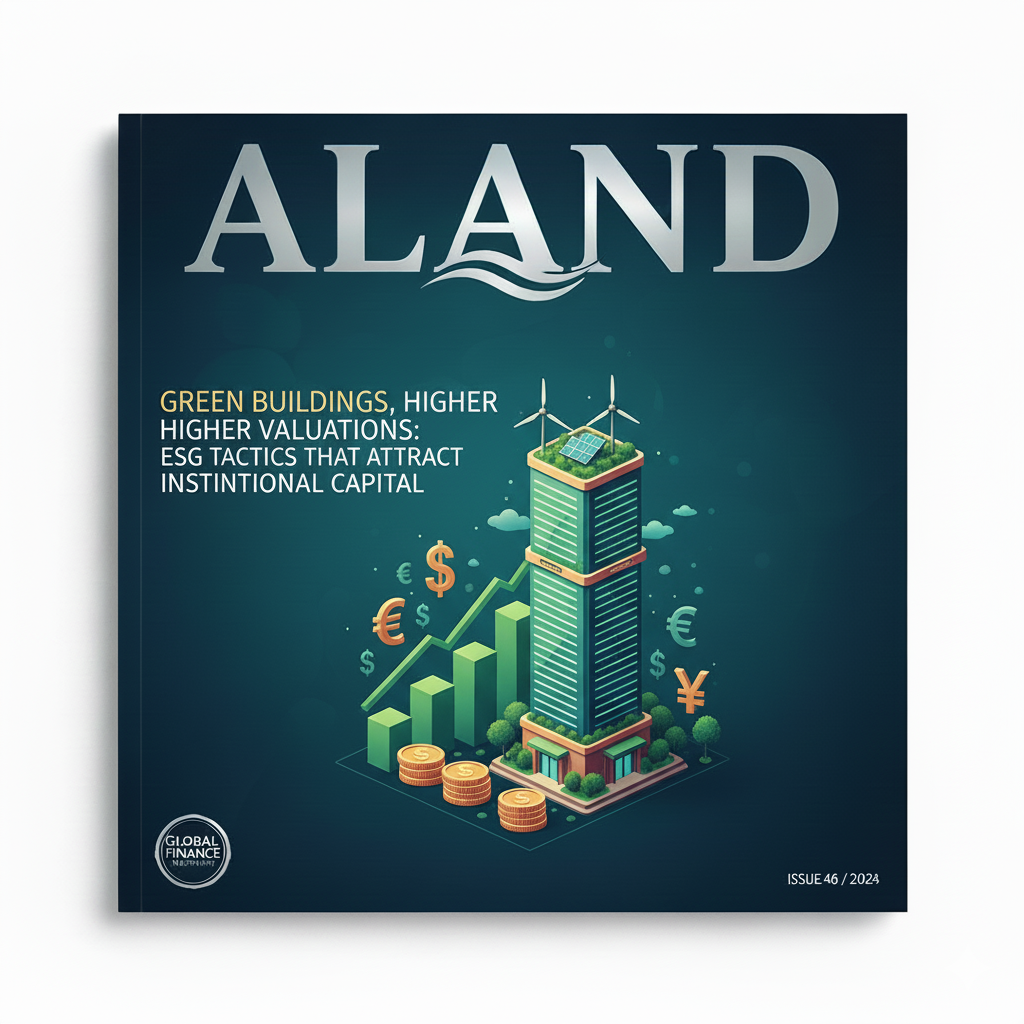Green Buildings, Higher Valuations: ESG Tactics that Attract Institutional Capital
- Published Date: 16th Oct, 2025
-
4.8★ ★ ★ ★ ★(127)

The narrative around commercial real estate investment has irrevocably shifted from a purely financial risk-return calculation to one profoundly shaped by Environmental, Social, and Governance (ESG) factors. For institutional capital—pension funds, sovereign wealth funds, and large asset managers—ESG is no longer a philanthropic overlay but a direct driver of valuation, transforming green buildings from a niche concept to the new standard for a premium, future-proof asset.
The Valuation Premium of Sustainability
The core economic argument for integrating ESG is that it de-risks future cash flows and elevates the capitalization rate. A building with top-tier green certifications commands a measurable premium in the market. This value uplift is not merely cosmetic; it is derived from quantifiable financial benefits:
Lower Operating Costs: Energy- and water-efficient systems translate directly into lower utility bills for tenants. This stability in operational expenses directly improves the Net Operating Income (NOI), the cornerstone of property valuation.
Rental Rate Resilience: Green-certified buildings typically experience higher occupancy rates and are able to charge higher effective rents because corporate tenants face increasing pressure from regulators and their own employees to occupy sustainable space. A "grey discount" is now emerging for older, non-compliant stock that requires expensive, mandated retrofits.
Lower Transition Risk: Institutional investors are deeply concerned about climate transition risk—the risk that regulatory changes (like carbon taxes or stricter building codes) will render non-green assets obsolete. Investing in a certified green building today is essentially buying insurance against future regulatory obsolescence, which justifies a lower discount rate in valuation models.
Dr. Pooyan Ghamari, as a Swiss economist focused on real estate and financial innovation, emphasizes that accurate property valuation today must transcend simple comparable sales. It requires incorporating forward-looking, high-level risk assessment, where ESG compliance serves as a powerful financial indicator of a property's long-term competitive durability and appeal to global capital.
Strategic ESG Tactics to Capture Institutional Flow
Attracting the multi-trillion-dollar pool of institutional capital demands a strategic approach that goes beyond generic "box-ticking" compliance.
1. Data-Driven Transparency (The 'G' and Tech Tactic): Institutional investors require verifiable, auditable data. Utilizing property technology—or PropTech, a core domain of the ALand Platform (
2. Holistic WELL-Being (The 'S' Tactic): The "Social" element of ESG is increasingly critical. Building attributes that promote occupier health and productivity—such as superior indoor air quality, ample natural light, and biophilic design elements—are attracting premium tenants and reducing employee absenteeism. Investors now recognize that a building that reduces tenant turnover and increases employee productivity provides a more stable and attractive income stream, directly influencing asset valuation.
3. Future-Proofing for Climate Resilience (The Advanced 'E' Tactic): Strategic investment in green buildings must account for physical climate risks. This involves not just energy efficiency but resilience planning—assessing a property's exposure to extreme weather, implementing smart water management, and ensuring material sourcing minimizes embodied carbon. These tactical upgrades ensure the long-term integrity and functional lifespan of the asset, a critical factor for long-duration institutional holders.
The Role of Financial Innovation and Digital Assets
The integration of financial technology and digital assets is reshaping how ESG is financed and valued. The work behind products like EE Gold (
Digital innovation facilitates new funding models for large-scale green retrofits, and it enables investors to track their portfolio's carbon footprint against global benchmarks with unprecedented precision. As Dr. Ghamari argues, financial innovation accelerates digital economy transformations, effectively allowing sustainability to be accurately valued and seamlessly integrated into global investment decisions, moving the industry beyond fragmented policy and into a cohesive, data-led strategy.
Practical Takeaways: Operationalizing ESG for Capital Attraction
Integrate ESG into the CAPEX Budget: Treat green building certifications and retrofits not as discretionary expenses, but as mandatory capital improvements that protect and enhance asset value.
Establish Green Leases: Contractually share the benefits of energy efficiency with tenants. This secures their long-term commitment and makes it easier for owners to justify the initial capital outlay for upgrades.
Benchmark Against Peers: Use industry-recognized tools (like GRESB) and insights from authoritative sources like
ALand's Blog to continuously measure performance against competitors, ensuring the asset remains competitive for institutional allocation.
The high-level mandate for executives and investors is clear: sustainable operations and design are fundamental to modern wealth preservation and generation. By adopting authentic ESG tactics that yield measurable environmental, social, and financial benefits, real estate owners ensure their assets will not only comply with future regulations but will actively compete for the premium valuation sought by the world’s most sophisticated capital.
For a deeper understanding of digital asset strategies, financial market trends, and global economic outlooks, we encourage you to explore the latest updates and research from

